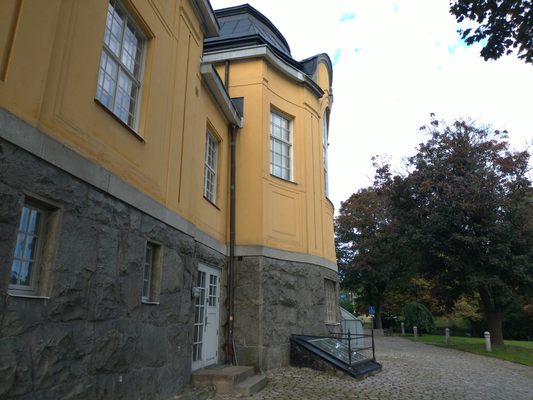About
Giant's kettles are formed when rocks swirl in currents under a glacier against a bedrock surface. Over time, this erodes the surface and carves a hole in the rock, ultimately forming the deep cavities known as giant's kettles. This is what happened in Sweden and northern Europe during the last ice age that ended about 10,000 B.C.
The massive ice that once covered Sweden and the rest of Scandinavia (three to four kilometers thick) has affected the geology of the region. The Norwegian fjords, isostatic rebound, and giant's kettles still to this day remind us of it.
What makes the giant's kettle in Haga unique is that it's found in the basement of what was once a courthouse. Measuring approximately 2.7 meters deep, it was discovered once the construction had been started and was incorporated into the basement.
Visitors can see it through a window and the stones that once carved the hole in the bedrock are now decorating the gate to the plot. The stones that formed the giant's kettle were affixed to the courthouse gateposts, which were later moved to the back of the house.
Related Tags
Know Before You Go
Haga courthouse is found on the outskirt of the Haga park in Solna. The giant's kettle can be seen through a window on the side of the building facing northeast (towards the lake). The gate with the rocks once forming it can be seen on the same side of the building.
Published
July 15, 2021































